Tomatoes are one of the most common garden plants, and you can elevate your tomato growing by using companion planting! We have some great companion plants that will help reduce pests, increase flavor and production, and help avoid diseases in your tomato crop.
Companion planting is an easy method to help improve your tomato harvests. Let’s get growing!
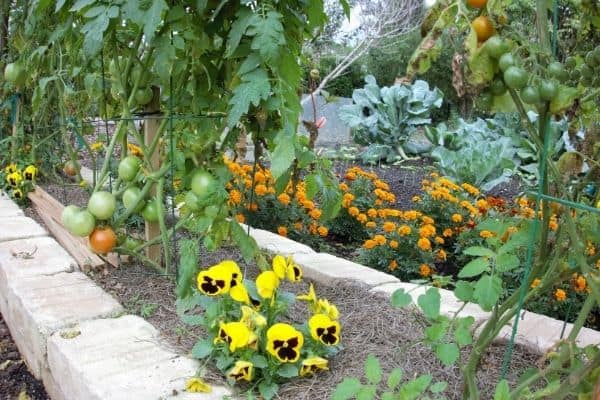
Table of Contents
What is companion planting?
Companion planting is the practice of growing plants in close proximity to each other in your vegetable garden so the plants can benefit from each other. Sometimes, these beneficial relationships involve deterring pests, while other times they may enhance plant growth or vegetable production, attract beneficial insects and pollinators, or prevent disease.
For instance, basil can help mask the scent of tomatoes from thrips, a common tomato plant pest. Interplanting tomatoes with basil plants can help protect your tomato plants from the stunted growth and early fruit drop caused by thrips.
Why should I try companion planting?
Companion planting can help reduce a lot of pest pressure in your garden, plus it can increase flavor and production—even better, it’s EASY! Just pop certain plants near each other in the garden and let the magic happen.
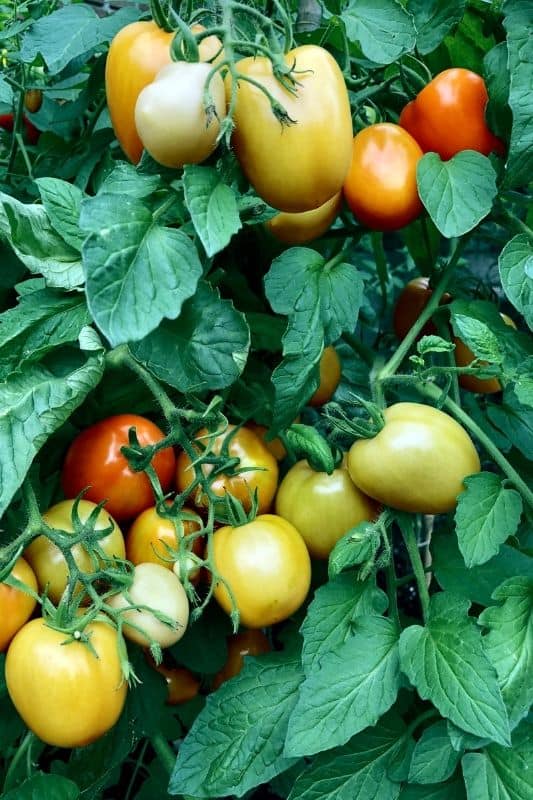
What are the absolute BEST companion plants for tomatoes?
You have lots of choice for companion planting with your tomatoes, but here are our two favorites.
- Basil. We think basil is maybe the MOST excellent companion plant for tomatoes. The strong smell of basil can mask tomatoes from numerous pests like thrips, aphids, and spider mites, protecting the plants. Basil can also deter tomato hornworms and armyworms. Lore states that basil planted near tomatoes can also help improve the flavor of tomatoes! It’s also just efficient garden design—since we use tomatoes and basil together so much in summer cooking (like in Caprese Salad).
- Marigold. Not only are marigolds a beautiful addition to your garden, but their strong scent helps confuse insects so they can’t find your tomatoes. Plus, the beautiful flowers are great at attracting beneficial insects like pollinators.
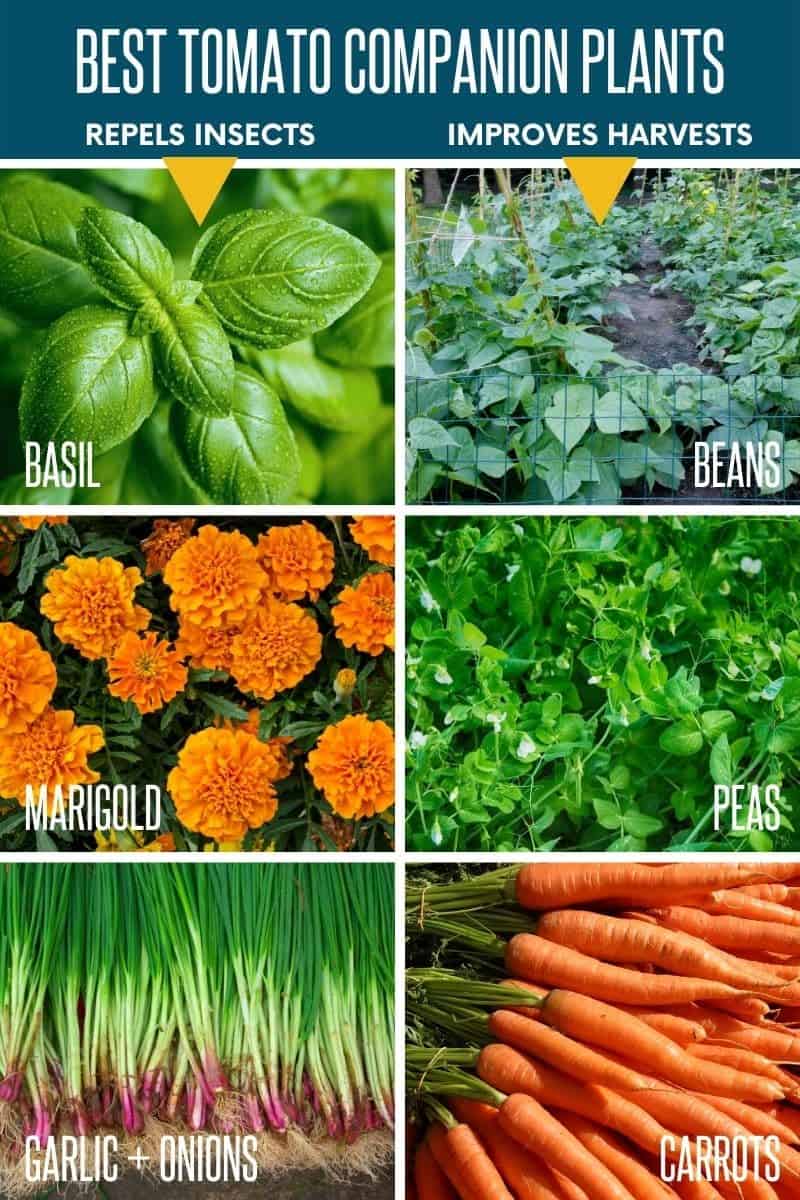
What are some other good companion plants for tomatoes?
Tomatoes are one of the most popular veggies in the garden, and even the smallest home garden can benefit from companion planting with tomatoes! Here are the best tomato companion plants we’ve found in the Growfully gardens:
Herbs and Flowers
- Borage
- Calendula. A great plant for attracting beneficial insects—which can help reduce pests and increase pollination.
- Chives
- Lemon balm. With a high scent, this herb is a great natural insect repellant, but it’s also a natural antimicrobial—which means it can help reduce the presence of fungal and bacterial diseases.
- Mint. Attracts parasitic wasps, which help control tomato hornworms. Do note that mint can be invasive, so rather than planting it directly in your garden bed, plant mint in its own container and place it near your tomatoes.
- Nasturtium
- Sage, oregano, parsley, and thyme. Attracts parasitic wasps, which help control tomato hornworms.
Vegetables
- Beans and peas. Beans and peas fix nitrogen to the soil, which makes heavy feeders like tomatoes happy. Bush beans, in particular, are a great space fit for around tomatoes—and they can help increase air circulation around tomato plants to reduce fungal diseases. But pole beans will do the trick, too, if you have the space.
- Carrots. Attracts parasitic wasps, which help control tomato hornworms and other caterpillar pests. An important caveat: some folks say that while planting tomatoes and carrots together improves the flavor of both, it can reduce the growth—especially of the carrots. If you don’t mind super flavorful but smaller carrots, this combo is worth a shot!
- Beets and radishes. These small root crops can nestle into spaces between tomato plants.
- Cucumber and squash. These can be grown as living mulch beneath tall plants like tomatoes—the leaves help with weed management and soil moisture retention. Just make sure you have enough growing space!
- Lettuce. Lettuce is a great companion because it’s a good use of space. You can fill in the space between tomato plants with lettuce, and the tomato plants can help shade the lettuce from the hot summer sun.
- Onion, garlic and other alliums. The overwhelming scent of onions, garlic, and chives can mask the scent of tomatoes from insects.
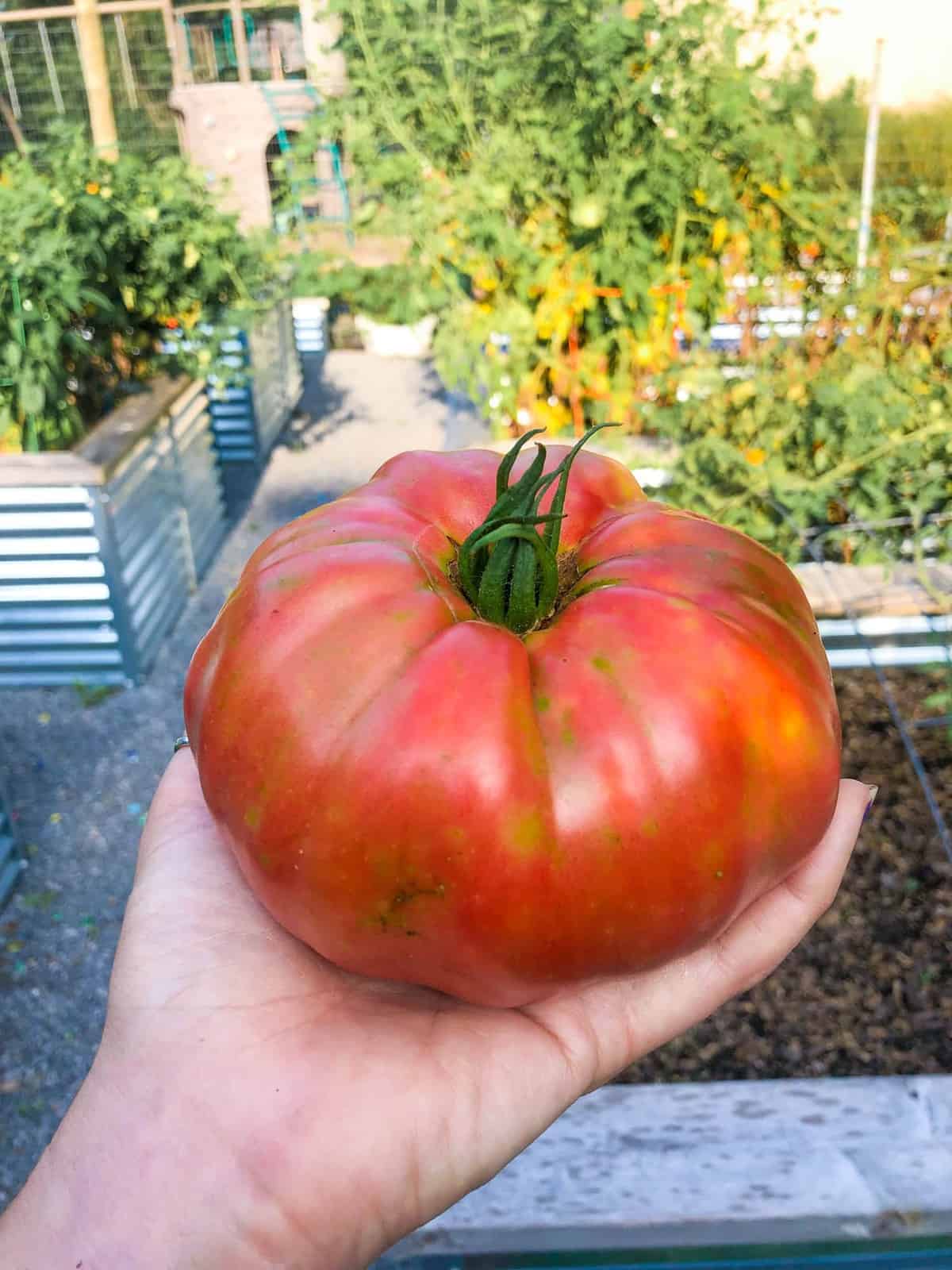
What are bad companion plants for tomatoes?
- Broccoli, cabbage, Brussels sprouts, kohlrabi, and other brassicas. Brassicas, including broccoli, cabbage, rutabaga, and cauliflower, will compete for nutrients with tomatoes, as both brassicas and tomatoes are heavy feeders.
- Cauliflower. See broccoli for why cauliflower and other brassicas make bad tomato companions.
- Eggplant, peppers, potatoes, and other nightshades. Tomatoes are a member of the nightshade family, which means you shouldn’t plant them with other nightshades like eggplants, peppers, or potatoes. This is because nightshades can share the same bacterial and fungal diseases.
- Fennel. Fennel is a rotten companion plant for many garden plants, and tomatoes are no exception!
- Walnut trees. This isn’t one you’ll usually plant in your garden beds, but it’s worth being aware of when placing your garden. Avoid placing your garden near walnut trees—the trees release a chemical called juglone, which causes walnut wilt and greatly inhibits the growth of tomatoes (and many, many other plants).
Sources
- Plant Partners by Jessica Walliser.
- Nathan L. Hartwig, & Hans Ulrich Ammon. (2002). Cover Crops and Living Mulches. Weed Science, 50(6), 688–699. http://www.jstor.org/stable/4046641
- Brooks, M. (1952). Ferns Associated with Black Walnut Trees. American Fern Journal, 42(4), 124–130. https://doi.org/10.2307/1545439
- Riesselman, Leah (2010). Companion Planting: A Method for Sustainable Pest Control. https://dr.lib.iastate.edu/server/api/core/bitstreams/9f6c0efd-b8b1-4ecc-b8d1-2abbdfb16548/content
- Lopez, L & Liburd, OE (2022) Can the introduction of companion plants increase biological control services of key pests in organic squash? Entomologia Experimentalis et Applicata 00: 1- 17. https://doi.org/10.1111/eea.13147
- Parker, J., Snyder, W., Hamilton, G., & Rodriguez-Saona, C. (2013) Companion planting and insect pest control. https://www.intechopen.com/chapters/42925

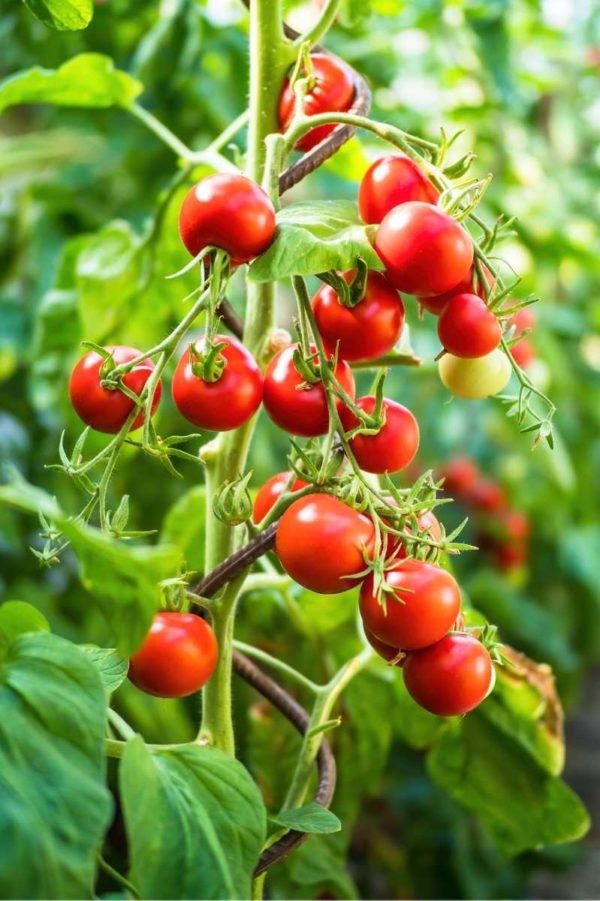

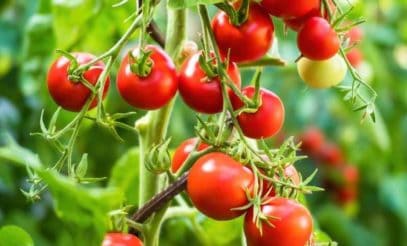

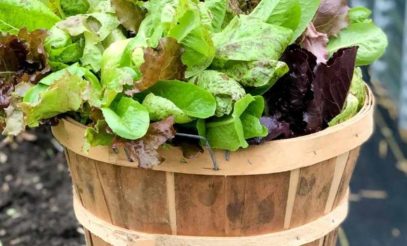
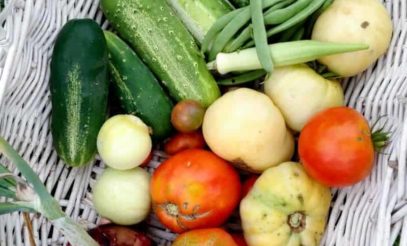
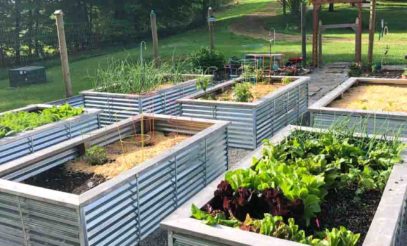
I have some kind a rodent or rodents eating my cukes. This happened after I harvested my garlic. Any idea what or how to fix problem
The best option for rodents is some sort of physical barrier—a cage or fence should do the trick!
Garlic and onions are enemies of the beans….
Hi in the title it was noted that this was evidence based. Can you please state your sources and hopefully provide links for us to follow?
Absolutely. There are many studies cited in the book Plant Partners: Science-Based Companion Planting Strategies for the Vegetable Garden that we used. I am also a Master Gardener, so some of the information came from that training and education. I’ve also linked some studies in the post above.